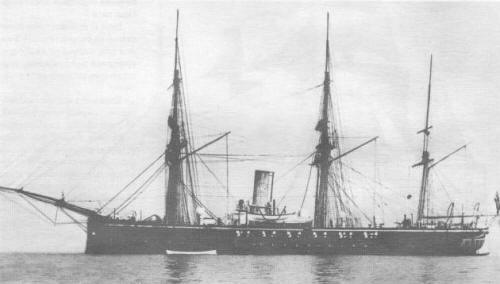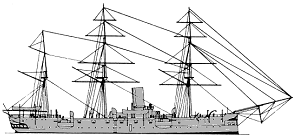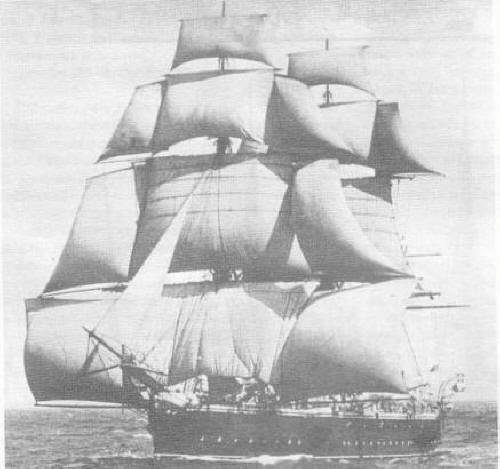
NAVYPEDIA
 Support the project with paypal
Support the project with paypal
Photo

Calypso
Ships
| Name | No | Yard No | Builder | Laid down | Launched | Comp | Fate |
|---|---|---|---|---|---|---|---|
| Calypso | Chatham DYd | 1.9.1881 | 7.6.1883 | 10.1885 | TS of Newfoundland Government 9.1902 | ||
| Calliope | Portsmouth DYd | 1.10.1881 | 24.7.1884 | 25.1.1887 | RNVR drill ship 10.1907 |
Technical data
| Displacement normal, t | 2770 |
|---|---|
| Displacement full, t |
|
| Length, m | 71.6 pp |
| Breadth, m | 13.6 |
| Draught, m | 6.07 |
| No of shafts | 1 (feathering screw) |
| Machinery | sails + 1 4-cyl HC, 6 rectangular boilers |
| Power, h. p. | 3000 |
| Max speed, kts | 13.7 |
| Fuel, t | coal 550 |
| Endurance, nm(kts) | 4000(10) |
| Armour, mm | steel; deck: 13 |
| Armament | 4 x 1 - 152/26 BL Mk IV, 12 x 1 - 127/25 BL Mk II, 2 x 1 - 76/19 12pdr 8cwt MLR, 10 x 1 - 11.4/78, 2 - 356 TC |
| Complement | 317 |
Standard scale images

Calypso 1885
Graphics
Project history
Designed by Nathaniel Barnaby, they were probably the most successful design of cruising ship built for Royal Navy. Their construction and internal layout was virtually a repetition of the last vessels in the Comus class. The main differences were the protective deck of steel being 0.9m longer and positioned 1.2m below the lower deck, a bilge keel 29m long, and the lower deck 0.6m above the water line. Both were barque-rigged, the mainmasi being 41.5m from deck to truck. Both had feathering screws, and at speeds over 5kts under sail the screw was allowed to turn over to reduce drag. The Rennie compound engines had two HP and two LP cylinders fed by six boilers. A small auxiliary steam-driven starting engine was located between the two HP cylinders, and another steam engine drove a dynamo to generate electricity. The 152mm BL guns were carried in sponsons on Vavasseur mountings and the 127mm guns were mounted six on either side. The MGs were placed on the topgallant forecastle, poop and forebridge. Searchlights were mounted over the centreline CT. They were able to steam at 15kts. Together with their near sisters of the Comus class, with their speed and heavy armament, they were the finest ships of the Victorian era, bringing to a close the role of the steam and sail corvette.
Ship protection
A protective deck of 13mm steel, extending for 32m amidships, was positioned over the machinery.
Modernizations
None.
Naval service
Calypso in September, 1902 was transferred to Newfoundland Government as training ship, renamed Briton 15.2.1916 and sold as store hulk in April, 1922. Calliope became RNVR drill ship in October, 1907, renamed Helicon in June, 1915 (name reverted to Calliope in October, 1931) and sold to BU in October, 1951.
 HOME
HOME FIGHTING SHIPS OF THE WORLD
FIGHTING SHIPS OF THE WORLD UNITED KINGDOM
UNITED KINGDOM CRUISERS
CRUISERS CALYPSO steel corvettes (2, 1885 - 1887)
CALYPSO steel corvettes (2, 1885 - 1887)

